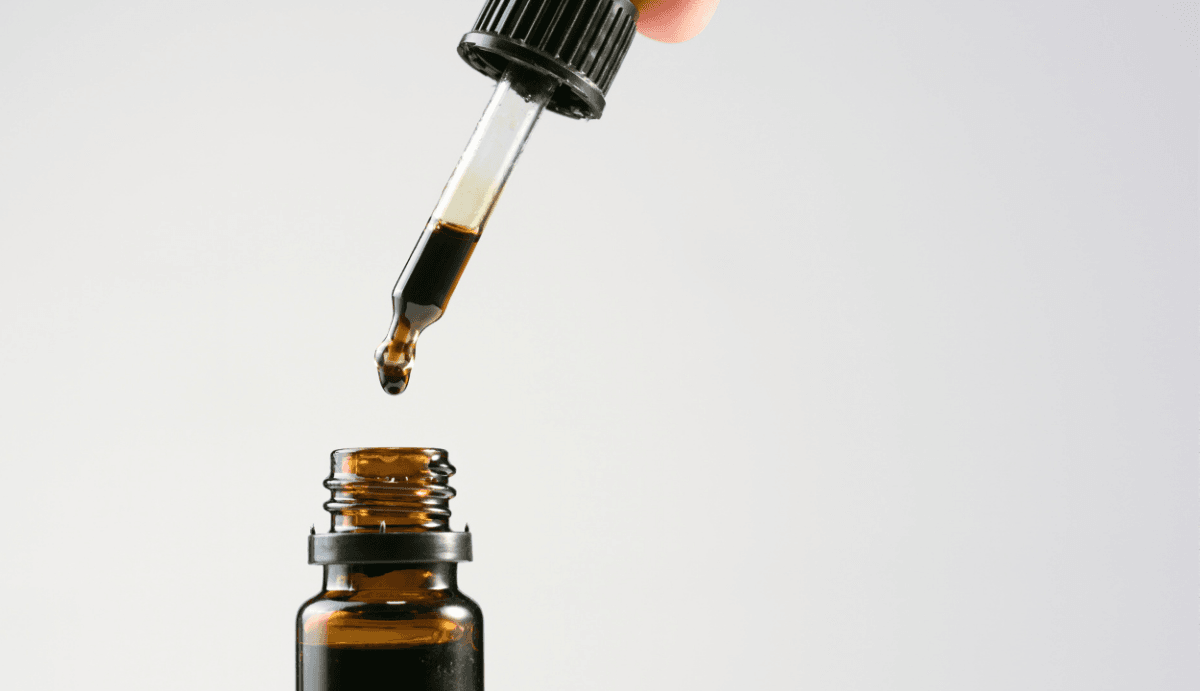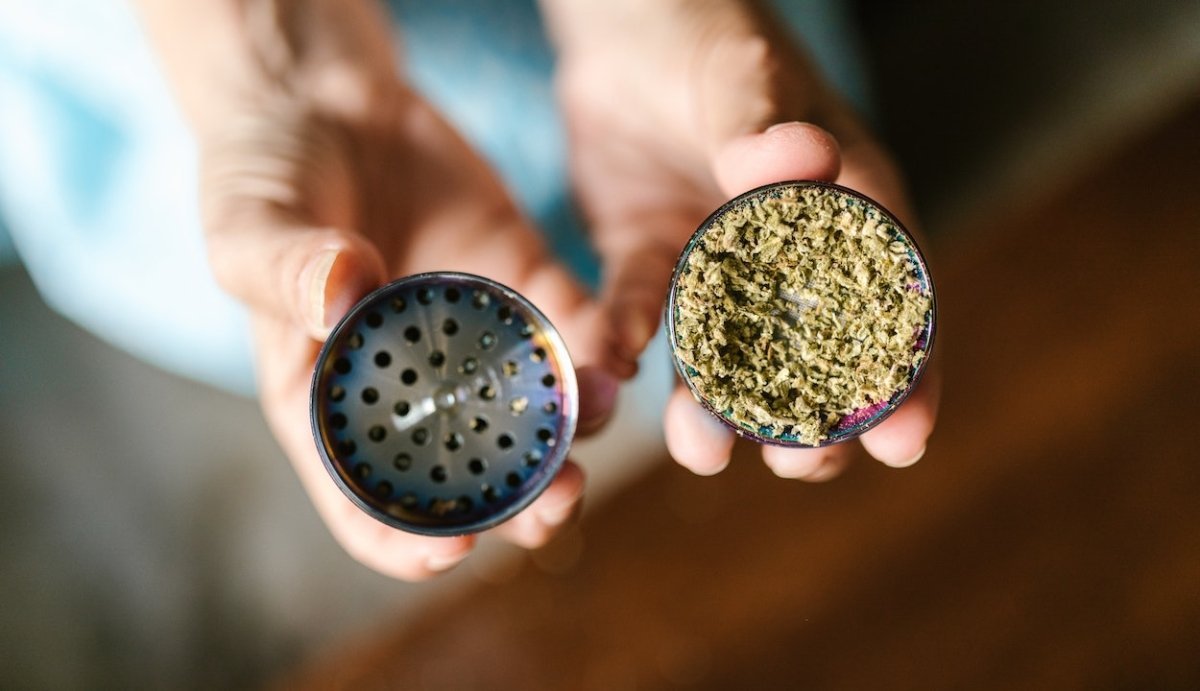Your Cart is Empty
FREE SHIPPING ON ALL ORDERS $75+
THC-O is three times more potent than Delta-9-THC, which begs the question: does THC-O have three times the therapeutic benefits of traditional cannabis material? Unfortunately, it's not that clear cut, but many of its therapeutic benefits do add up, like using THCO-O for nausea and inducing appetite when you're feeling a bit under the weather.
We want to dig deeper into this potential benefit so that you'll know which cannabinoid to choose when nausea arises. Let's go:
Table of ContentsTHC-O's potential benefits are still mostly unknown, but it's no secret that many people are intrigued by its increased potency. It's unclear if this directly translates to increased therapeutic value, but it's likely.

The reason that THC-O is so much stronger is because it has a greater affinity for CB1 receptors in the body. That means that it binds with the endocannabinoid system at a higher rate than traditional THC. In theory, this means that THC-O can provide even greater therapeutic benefits, closely replicating the benefits of traditional THC products.
Still, more research into THC-O is needed, so we draw most of what we know from anecdotal reports and what we know about related cannabinoids' ability to help soothe nausea. We know that THC-O interacts with the Endocannabinoid System similarly to other hemp-derived cannabinoids, especially THC and Delta-8, so it's fair to say that it offers similar benefits.
The Endocannabinoid System is a cell signaling system that's responsible for the regulation of many essential bodily functions.
To put it simply, the Endocannabinoid System's job is to maintain a state of balance, called homeostasis, which also involves the regulation of things like metabolism, digestion, and yes, nausea and vomiting.
We know that THC-O binds to the CB-1 receptor even more efficiently than Delta-9-THC. Research also suggests that the CB-1 receptor plays a role in the regulation of nausea, vomiting, and inflammation in the gut.
A 2011 review published in the British Journal of Pharmacology concluded that the cannabinoids that are useful in treating nausea symptoms do so by acting as agonists of the CB-1 receptor. This further verifies that THC-O, a CB-1 agonist, has great potential as a therapeutic option for combating nausea.
We mentioned that there is currently not much evidence regarding the therapeutic properties of THC-O, but there is plenty of research to help us understand how THC, including some hemp-derived THC products, can help to combat nausea and related symptoms.
It’s very well accepted among the medical community that THC can help relieve nausea. In a recent study titled “The Effectiveness of Common Cannabis Products for Treatment of Nausea” researchers found that up to 96% of patients using cannabis for nausea experienced significant relief.
Another study found that several cannabinoids, including CBD, may have promise for managing nausea through various endocannabinoid receptor activities. A 1995 study centers around the use of Delta-8-THC in pediatric cancer patients to manage nausea caused by traditional cancer treatments, like chemotherapy.
Delta-8-THC was administered to children aged 3 to 13 who were undergoing chemotherapy and suffered from related nausea and vomiting. Delta-8-THC doses were given 2 hours prior to the chemo treatment and then every six hours after the treatment for 24 hours.
The study concluded that Delta-8-THC was 100% effective at reducing vomiting in all 480 participants. It also suggested that Delta-8 was potentially more useful for managing nausea than Delta-9, because it could be given in larger doses without the same adverse effects, even in children.
When you're experiencing nausea, it’s usually hard to eat, much less keep anything down. And that's unfortunate, because when you're sick you need as much nutrition and hydration as possible.

Luckily, THC-O is known to help stimulate appetite similarly to Delta-9-THC. In fact, anecdotal reports suggest that THC-O is notorious for giving consumers a serious case of the munchies, which may be exactly what you need when your appetite is lacking due to nausea.
There's currently no research regarding THC-O's ability to increase appetite, but we know that other hemp-derived THC products can. A 2004 animal study found that Delta-8-THC stimulates appetite in mice. The research compared Delta-8-THC to Delta-9 and found Delta-8 to be more effective. Traditional THC, on its own, is so effective at increasing appetite that it's commonly recommended for patients with eating disorders or cachexia (wasting syndrome).
Many people are looking to experience THC-O's therapeutic effects for nausea but don't necessarily want to get lit while they're feeling under the weather. In this case, you may be able to microdose THC-O in order to reap therapeutic benefits without experiencing heightened psychoactivity. Of course, since THC-O is nearly three times stronger than traditional THC products, you are likely to feel high even with small doses.
Another option is to look at Delta-8-THC products. Not only has Delta-8 been more heavily researched in regards to its benefits for nausea, but its psychoactive effects are much milder than traditional THC products. You may be able to take Delta-8 at regular doses without getting too high, or you could microdose Delta-8 in order to reap its therapeutic benefits without any psychoactivity at all.
There have not been any research efforts specifically dedicated to identifying the side effects of THC-O, but it is generally thought to have a side effect profile that's similar to Delta-9's. That's because THC-O and Delta-9 are similar and have similar interactions in the body.
In general, the side effects of THC-O products are thought to be rare and mild when THC-O is used in mild to moderate doses. Some of the the side effects most commonly associated with THC-O may include:
If you want to try THC-O for nausea, you’ll be happy to know that it's pretty straightforward. Here’s how to get started:
First, you may want to choose a fast-acting dosing method to combat nausea, because some products may take over an hour to kick in. A THC-O vaporizer can provide instant effects. It's also easy to stack on small doses every few minutes until you reach your desired effect, which is a great benefit to anyone who isn’t sure about their THC-O dosage.
Also note that the effects from a THC-O vape may last anywhere from 4 to 6 hours. That means you may need to take more than one dose throughout the day if your nausea persists.
To learn more about dosing, read "How Much THC-O Should I Take?”
Keep in mind that everyone's experience with THC-O is unique, so just pay close attention to how you feel and adjust your dosage amount and dosing routine accordingly.

Virtually any type of THC-O product will offer similar therapeutic benefits, but many people prefer fast acting doses for combating nausea. Also, you'll probably want to avoid stocking up on THC-O edibles for this purpose, since it can be difficult to get any type of food down when you're feeling queasy.
Our recommendation for the best THC-O product for dealing with nausea? A THC-O Vape. Our THC-O Vaporizers also contain premium Delta-8-THC distillate and hand-selected terpenes to create a synergistic experience that’s balanced and therapeutically charged.
THC-O vapes can be useful for new consumers, too, since the doses can be slowly stacked on one puff at a time.
Looking for premium THC-O?Check out our Elev8 Collection. All Vida Optima products are made according to the industry’s highest standards and are 100% Farm Bill compliant.
You may also want to read:
Comments will be approved before showing up.



